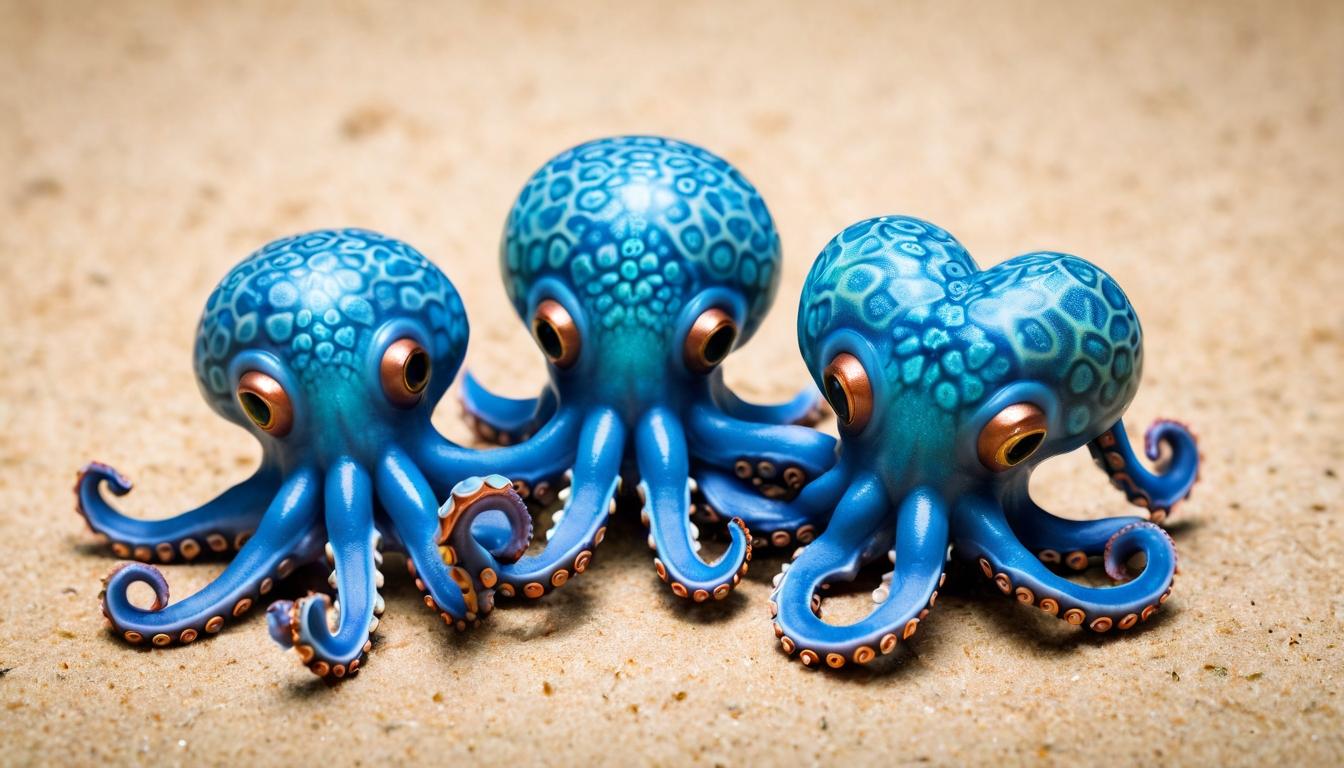Deep beneath the ocean's surface, where sunlight fades into perpetual twilight, one of nature's most extraordinary creatures defies everything we think we know about intelligence. The octopus—with its three hearts pumping blue copper-based blood, its ability to change color and texture in milliseconds, and its distributed brain network that extends into its arms—represents an evolutionary path so alien it might as well be from another planet. Marine biologists have documented octopuses solving complex puzzles, opening childproof containers, and even engaging in what appears to be playful behavior. Their short lifespan of one to three years makes their rapid learning capabilities even more remarkable—they're essentially born scientists, experimenting with their environment from the moment they hatch.
What truly sets octopuses apart is their distributed intelligence. Unlike vertebrates with centralized brains, two-thirds of an octopus's neurons reside in its arms, each capable of independent decision-making. This explains how an arm can continue reacting to stimuli minutes after being severed. Their skin contains chromatophores, iridophores, and leucophores—specialized cells that create their mesmerizing camouflage. But recent research suggests this color-changing ability might also serve as a form of visual communication, with specific patterns corresponding to different emotional states or social signals.
The escape artistry of octopuses borders on legend. At the Santa Monica Pier Aquarium, an octopus named Otto was documented squirting water at overhead lights to short-circuit them when annoyed. In New Zealand, Inky the octopus made international headlines by slipping through a narrow gap in his tank, crawling across the floor, and escaping down a drainpipe to the ocean. Their boneless bodies allow them to contort through openings no larger than their beak, the only hard part of their anatomy. This combination of intelligence, flexibility, and problem-solving makes aquarium keeping a constant challenge—these are animals that require enrichment, stimulation, and constant security upgrades.
Their reproductive strategies are equally fascinating. Male octopuses develop a specialized arm called a hectocotylus to deliver sperm packets to females. In some species, the male detaches this arm entirely during mating, which then swims independently to the female—a bizarre example of biological automation. After mating, females enter a period of brooding where they stop eating and devote all their energy to protecting their eggs. They gently blow water over them to keep them oxygenated and fend off predators until, exhausted, they die just as their offspring hatch. This tragic lifecycle adds a poignant layer to their already complex existence.
Perhaps most astonishing is their relationship with tools. Veined octopuses in Indonesia have been observed collecting coconut shell halves, carrying them awkwardly across the seafloor, and reassembling them into portable shelters—the first documented example of invertebrate tool use. Blanket octopuses display even more remarkable behavior: females of the species tear toxic tentacles from Portuguese man o' war jellyfish and wield them as weapons. This ability to recognize, harvest, and utilize another creature's defense mechanism demonstrates cognitive abilities we're only beginning to understand.
The more we study these cephalopods, the more they challenge our definitions of consciousness. Their ability to learn through observation, solve novel problems, and exhibit what appears to be personality suggests a form of intelligence that evolved completely independently from our own. As ocean temperatures rise and acidification threatens marine ecosystems, understanding these incredible creatures becomes not just scientifically valuable but urgently necessary. They represent one of evolution's most creative experiments—a reminder that intelligence on Earth comes in forms far stranger than we ever imagined.
The secret lives of octopuses: three hearts, blue blood, and escape artist skills

